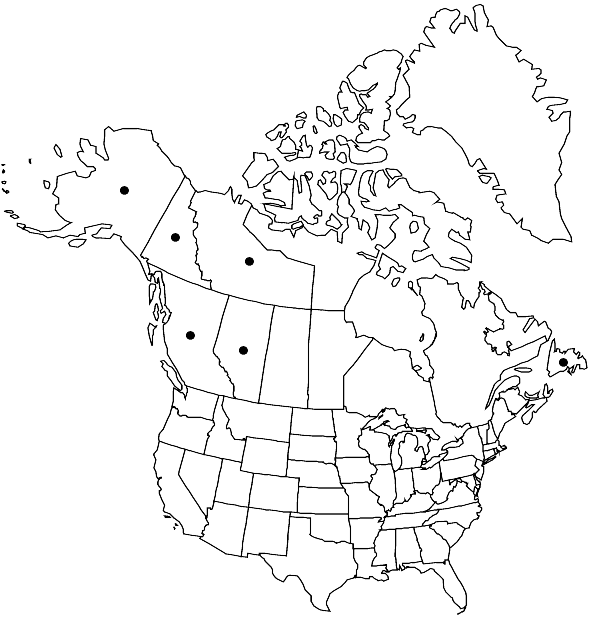Difference between revisions of "Encalypta longicollis"
Abh. Math.-Phys. Cl. Königl. Bayer. Akad. Wiss. 1: 282. 1832,.
FNA>Volume Importer |
FNA>Volume Importer |
||
| Line 42: | Line 42: | ||
|publication year= | |publication year= | ||
|special status= | |special status= | ||
| − | |source xml=https://jpend@bitbucket.org/aafc-mbb/fna-data-curation.git/src/ | + | |source xml=https://jpend@bitbucket.org/aafc-mbb/fna-data-curation.git/src/f6b125a955440c0872999024f038d74684f65921/coarse_grained_fna_xml/V27/V27_229.xml |
|genus=Encalypta | |genus=Encalypta | ||
|species=Encalypta longicollis | |species=Encalypta longicollis | ||
Revision as of 19:38, 24 September 2019
Stems 10–20 mm, central strand weakly differentiated. Leaves narrowly spathulate to lingulate, 1.5–3.5 mm; apices broadly acute, mucronate, apiculate or hair-pointed; margins more or less plane; costa excurrent or sometimes percurrent; laminal cells 10–16 µm; basal cells rectangular, 30–70 µm, walls thin, smooth; basal marginal cells not differentiated. Specialized asexual reproduction absent. Seta 5–12 mm, brownish red. Capsule exserted, short-cylindric, 1–2 mm, smooth, with neck differentiated from urn, constricted and twisted when dry, yellowish brown; exothecial cells rectangular to linear; peristome double, reddish, teeth linear, 0.5 mm, papillose, erect when wet, erect to weakly recurved when dry, endostome fused to exostome, smooth, as long as teeth, basal membrane absent; operculum 1–1.5 mm. Calyptra, 3–6 mm, lacerate at base, smooth. Spores 60–80 µm, granulate, brown.
Habitat: Somewhat restricted to mesic habitats with calcareous soils
Distribution

Alta., B.C., Nfld. and Labr. (Nfld.), N.W.T., Yukon, Alaska, Europe, Asia.
Discussion
The large spores, capsule smooth above neck, and distinctly red peristome will separate Encalypta longicollis from similar species. The peristome appears single, but closer inspection shows endostome segments fused to the teeth. The spores are strongly granulate and much larger than those of other species in the genus. These characters will help also to place muticous-leaved forms of this species that resemble E. brevicollis or E. affinis.
Selected References
None.